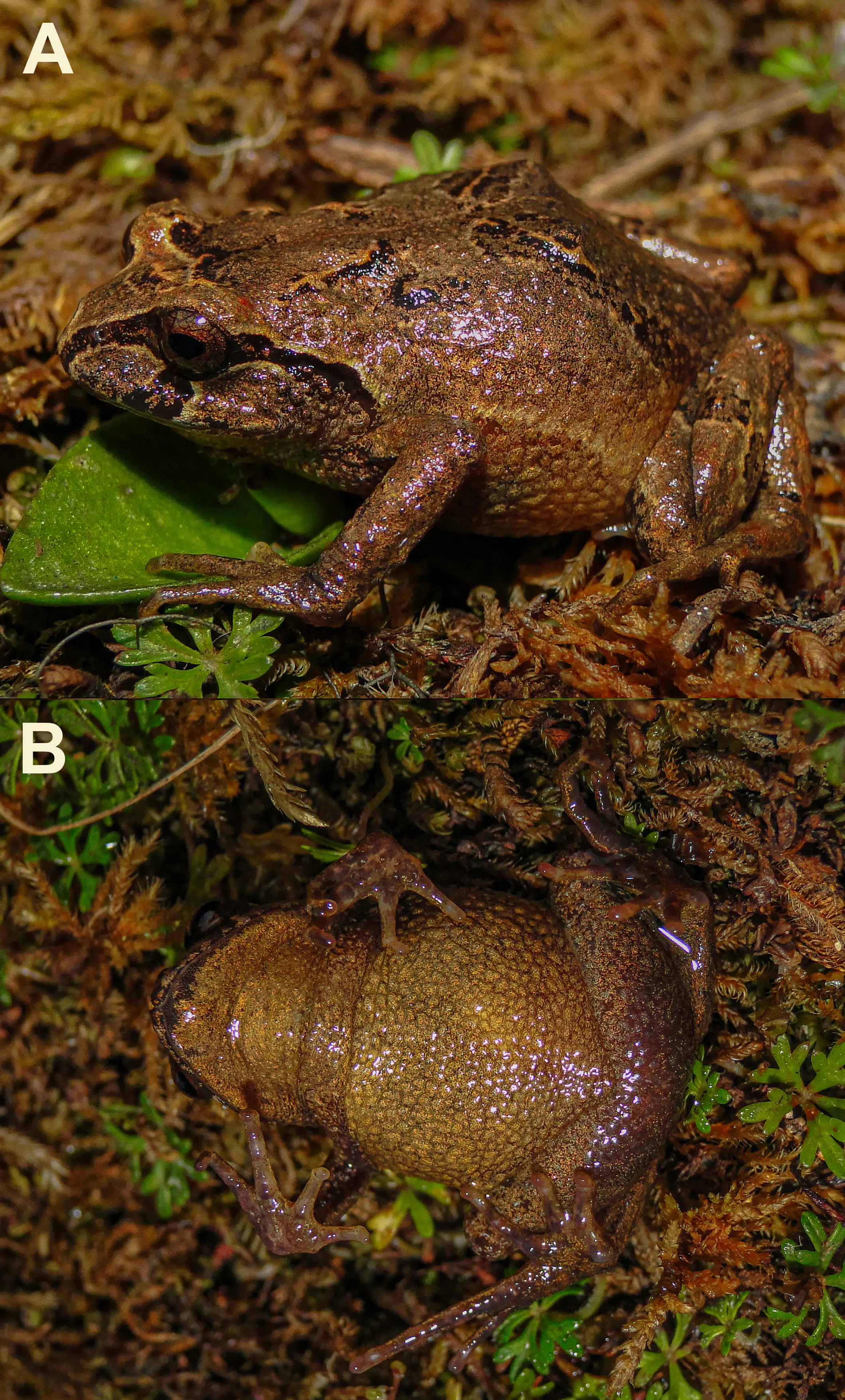In the shadow of Peru’s Andes Mountains, scientists have uncovered a previously unknown creature with striking red eyes and long fingers. The discovery was made in the remote Yanachaga-Chemillén National Park, where the creature’s unique characteristics caught the attention of researchers during a routine wildlife survey. The frog, named Phrynopus manuelriosi in honor of a prominent Peruvian conservationist.
A study published in PeerJ detailed the discovery of a newly identified amphibian, part of the Phrynopus genus, which was recognized after a closer examination of frogs found in 2010. Despite its small size—just over an inch in length—the Manuel Ríos’ Andes frog stands out due to its large red eyes, slender body, and distinct markings.
A Surprising Discovery in the Andes
A team of researchers from various institutions ventured into Yanachaga-Chemillén National Park in central Peru in 2010. They were primarily focused on surveying the area’s diverse amphibian populations. The scientists expected to encounter new species, given the park’s reputation for exceptional biodiversity.
They didn’t have to wait long: during their nighttime expeditions, the team discovered a set of frogs unlike any they had previously studied. After further analysis, including DNA testing, they concluded that they had identified a completely new species of frog, Phrynopus manuelriosi.
The frogs were particularly intriguing due to their large red eyes, a feature that stands out in the dim light of the forest. Researchers also noted the creatures’ slender arms with long fingers and toes, which are adapted for their environment. The frogs display a color range from pale brown to yellowish-brown, with darker markings and bright red patches on their sides and legs. This unique coloration helps distinguish them from other frogs in the region.
 The Phrynopus manuelriosi, known as Manuel Ríos’ Andes frog, photographed from both overhead and beneath. Credit: PeerJ
The Phrynopus manuelriosi, known as Manuel Ríos’ Andes frog, photographed from both overhead and beneath. Credit: PeerJ
How the Manuel Ríos’ Andes Frog Shapes Its Ecosystem
While the Manuel Ríos’ Andes frog’s distinctive features set it apart, its discovery also shines a light on the ecological importance of the region. According to the study, the frogs were found in an “elfin forest,” a unique ecosystem located at an elevation of around 10,760 feet. This environment, with its cooler temperatures and dense vegetation, provides a rich habitat for many rare species. The national park where the frogs were discovered has long been recognized for its biodiversity, particularly its amphibians.
Despite the frogs being found in a protected area, researchers have raised concerns about their long-term survival. Evidence of nearby habitat destruction due to human activity has prompted warnings about the potential risks to the frogs’ habitat.

How Can This New Species Be Preserved?
Named after Manuel Ríos, “a Peruvian forest engineer and professor … who has dedicated his life to preserving the natural heritage of his country,” said the research team. According to them, Ríos has dedicated much of his career to preserving Peru’s natural heritage, making the naming of the species a fitting tribute to his work.
Although the frog’s specific behavior and lifestyle are not yet fully understood, further research is needed to understand its role within the ecosystem. At present, the primary concern is the preservation of the frog’s habitat. The study emphasizes that without proper protection and enforcement of park boundaries, the frog’s survival could be jeopardized, along with that of other vulnerable species in the area.

